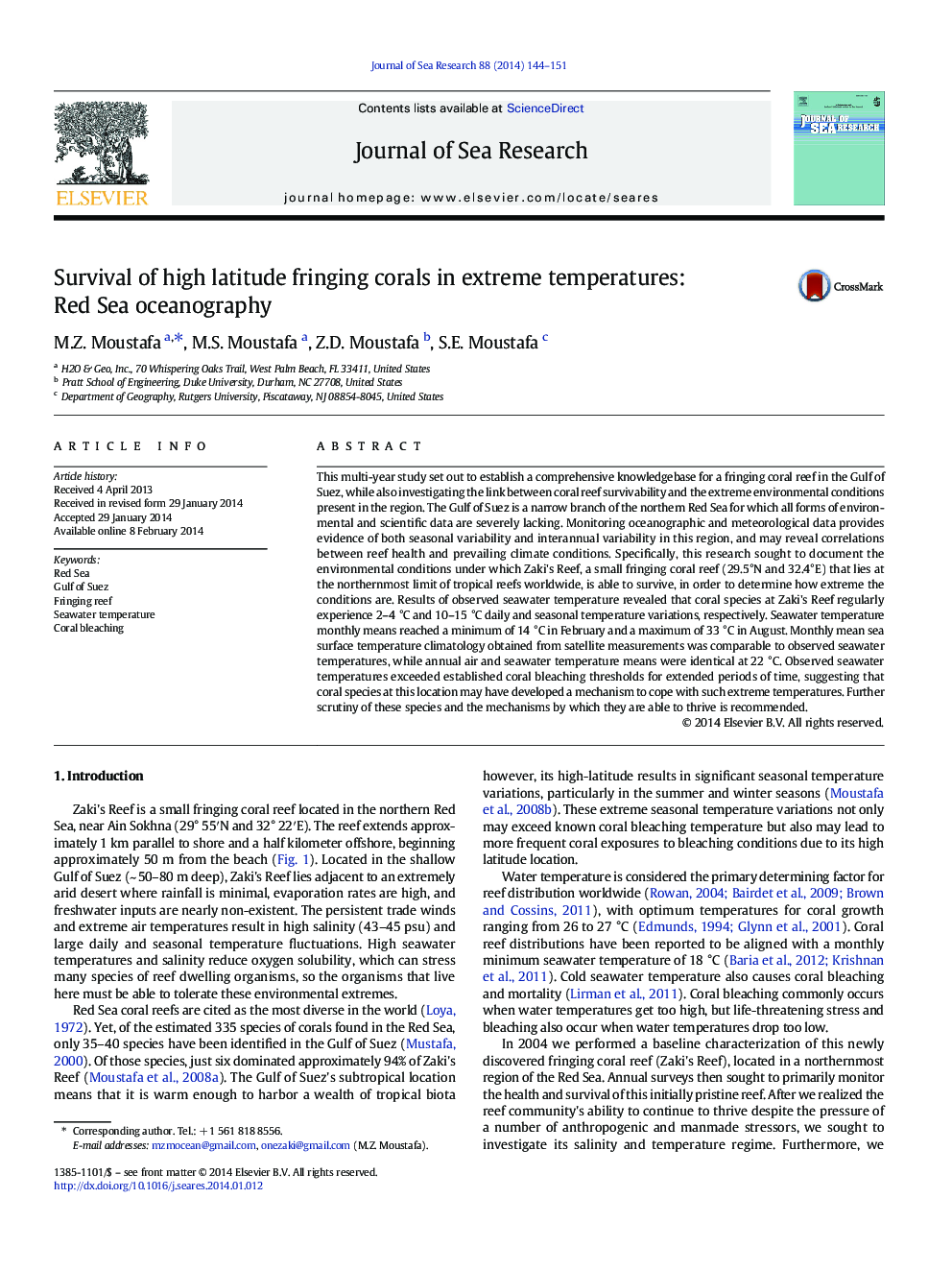| کد مقاله | کد نشریه | سال انتشار | مقاله انگلیسی | نسخه تمام متن |
|---|---|---|---|---|
| 6387350 | 1627486 | 2014 | 8 صفحه PDF | دانلود رایگان |
- Establish coral reef resilience to thermal tolerance for a high-latitude coral reef
- Correlated reef existence and resilience to prevailing air and water temperatures
- Establish region climatology from observed satellite sea surface temperature (SST)
- Determine cyclic nature of water temperature & it's correlation to air temperature
- Created a comprehensive database for a poorly studied region; 1st of its kind
This multi-year study set out to establish a comprehensive knowledgebase for a fringing coral reef in the Gulf of Suez, while also investigating the link between coral reef survivability and the extreme environmental conditions present in the region. The Gulf of Suez is a narrow branch of the northern Red Sea for which all forms of environmental and scientific data are severely lacking. Monitoring oceanographic and meteorological data provides evidence of both seasonal variability and interannual variability in this region, and may reveal correlations between reef health and prevailing climate conditions. Specifically, this research sought to document the environmental conditions under which Zaki's Reef, a small fringing coral reef (29.5°N and 32.4°E) that lies at the northernmost limit of tropical reefs worldwide, is able to survive, in order to determine how extreme the conditions are. Results of observed seawater temperature revealed that coral species at Zaki's Reef regularly experience 2-4 °C and 10-15 °C daily and seasonal temperature variations, respectively. Seawater temperature monthly means reached a minimum of 14 °C in February and a maximum of 33 °C in August. Monthly mean sea surface temperature climatology obtained from satellite measurements was comparable to observed seawater temperatures, while annual air and seawater temperature means were identical at 22 °C. Observed seawater temperatures exceeded established coral bleaching thresholds for extended periods of time, suggesting that coral species at this location may have developed a mechanism to cope with such extreme temperatures. Further scrutiny of these species and the mechanisms by which they are able to thrive is recommended.
Journal: Journal of Sea Research - Volume 88, April 2014, Pages 144-151
